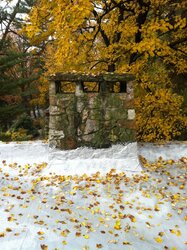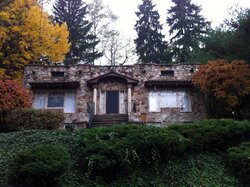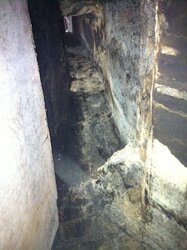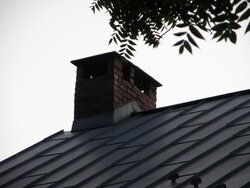So here's the short story:
My girlfriend and I were both laid-off recently, within a few months of each other. To save money, I rented my house out, and moved into her's (for love if she asks, but really because mine was more marketable). We now live in her 1920's stone ranch house. 1 story - aprox 1500 sqft, with a semi-finished basement. Heating bills (Natural Gas radiator) in winter are in the $300+/mo range (old house/crap insulation), so obviously looking to find an alternative
My house (the one that I rented out) had an old wood stove in the basement that I had cleaned the holy bat-snot out of, but had, literally, never used.
So, I went and pulled the wood stove out, and now it's sitting on my porch. After lurking on this site, I now know it's a Kent Tile Wood Stove, circa 1985.
Currently, our fireplace has a vented NG log-set in it. I'd like to take the log-set out and replace it with the Kent wood-stove. I've got plenty of clearance on all sides, and the original chimney is the only decent place to run a wood-stove in this house.
I'm thinking that I need to have a plumber come and pull that out and secure the NG lines, then I'll put the Kent in the fireplace. Install double-lined chimney pipe to the top of the existing chimney (cap etc), and probably a blower (suggestions appreciated).
What am I missing, and what should I be looking for? Sadly, budget is a huge issue for us, so I'm stuck with the Kent Tile (even though I know an insert would be better). I'm ok with making an investment to make it safe and warm, but I can't afford to waste money.
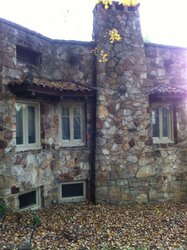
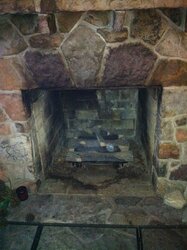
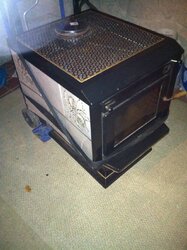
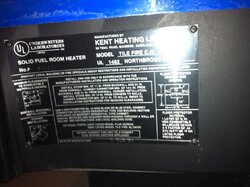
My girlfriend and I were both laid-off recently, within a few months of each other. To save money, I rented my house out, and moved into her's (for love if she asks, but really because mine was more marketable). We now live in her 1920's stone ranch house. 1 story - aprox 1500 sqft, with a semi-finished basement. Heating bills (Natural Gas radiator) in winter are in the $300+/mo range (old house/crap insulation), so obviously looking to find an alternative
My house (the one that I rented out) had an old wood stove in the basement that I had cleaned the holy bat-snot out of, but had, literally, never used.
So, I went and pulled the wood stove out, and now it's sitting on my porch. After lurking on this site, I now know it's a Kent Tile Wood Stove, circa 1985.
Currently, our fireplace has a vented NG log-set in it. I'd like to take the log-set out and replace it with the Kent wood-stove. I've got plenty of clearance on all sides, and the original chimney is the only decent place to run a wood-stove in this house.
I'm thinking that I need to have a plumber come and pull that out and secure the NG lines, then I'll put the Kent in the fireplace. Install double-lined chimney pipe to the top of the existing chimney (cap etc), and probably a blower (suggestions appreciated).
What am I missing, and what should I be looking for? Sadly, budget is a huge issue for us, so I'm stuck with the Kent Tile (even though I know an insert would be better). I'm ok with making an investment to make it safe and warm, but I can't afford to waste money.






 It is a cool old house and has some fun things that you don't find in new construction, like a spiral staircase in the living room that goes down to the basement.
It is a cool old house and has some fun things that you don't find in new construction, like a spiral staircase in the living room that goes down to the basement.